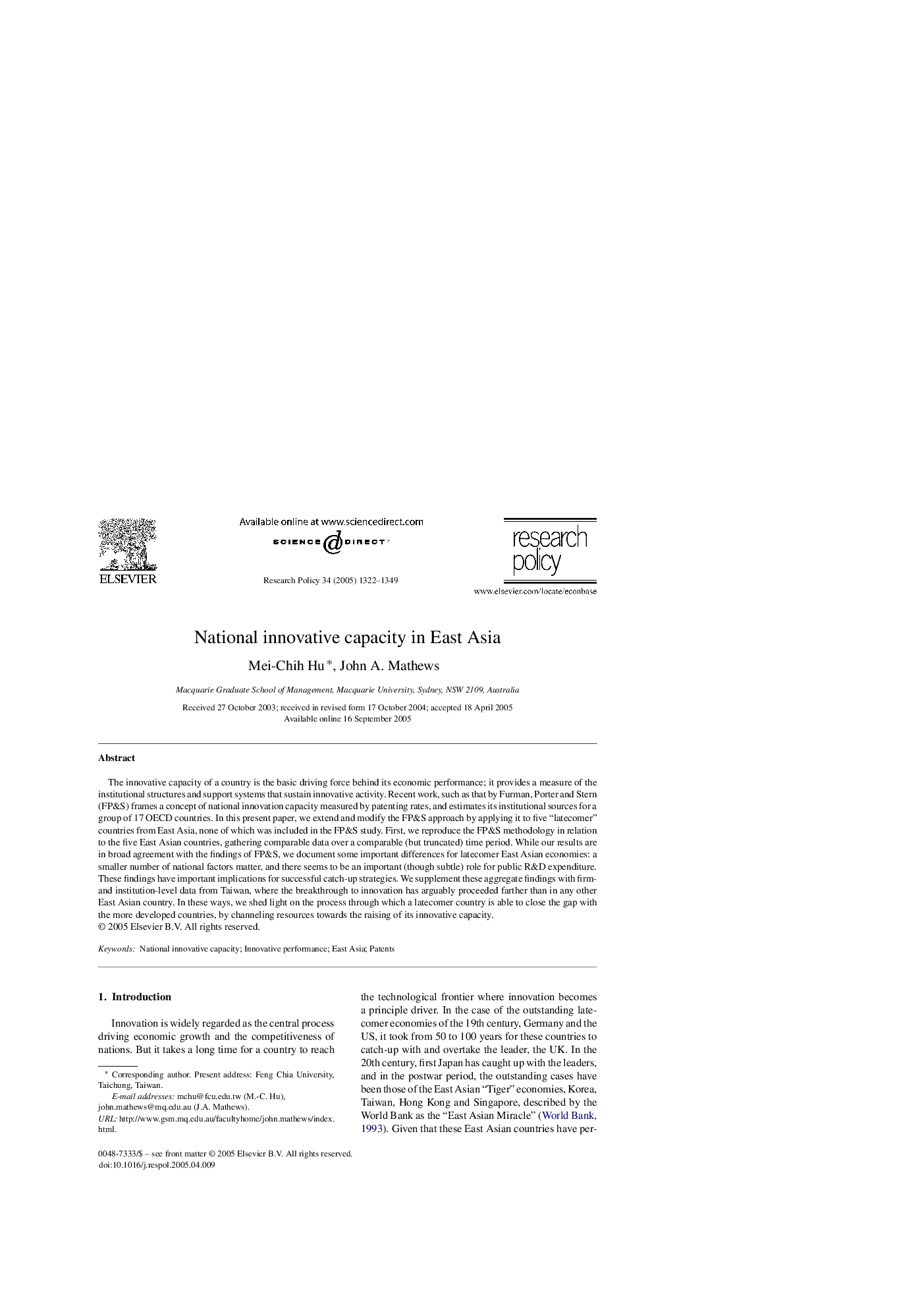| Article ID | Journal | Published Year | Pages | File Type |
|---|---|---|---|---|
| 10483680 | Research Policy | 2005 | 28 Pages |
Abstract
The innovative capacity of a country is the basic driving force behind its economic performance; it provides a measure of the institutional structures and support systems that sustain innovative activity. Recent work, such as that by Furman, Porter and Stern (FP&S) frames a concept of national innovation capacity measured by patenting rates, and estimates its institutional sources for a group of 17 OECD countries. In this present paper, we extend and modify the FP&S approach by applying it to five “latecomer” countries from East Asia, none of which was included in the FP&S study. First, we reproduce the FP&S methodology in relation to the five East Asian countries, gathering comparable data over a comparable (but truncated) time period. While our results are in broad agreement with the findings of FP&S, we document some important differences for latecomer East Asian economies: a smaller number of national factors matter, and there seems to be an important (though subtle) role for public R&D expenditure. These findings have important implications for successful catch-up strategies. We supplement these aggregate findings with firm- and institution-level data from Taiwan, where the breakthrough to innovation has arguably proceeded farther than in any other East Asian country. In these ways, we shed light on the process through which a latecomer country is able to close the gap with the more developed countries, by channeling resources towards the raising of its innovative capacity.
Related Topics
Social Sciences and Humanities
Business, Management and Accounting
Business and International Management
Authors
Mei-Chih Hu, John A. Mathews,
